|
When Mei Li in Flower Drum Song sings her gently optimistic anthem, "A Hundred Million Miracles," she voices her character's optimism about the wonders of everyday life. Among the miracles she cites is the birth of a song:
When an idle poet puts words on a page,
Writes on a page with his brush,
A musical friend writes the notes to blend
Suggested by an idle thrush.
Then a young soprano reads what they wrote,
Learns every note, every word,
Puts all they wrote in her lovely throat,
And suddenly a song is heard!
The poet and musical friend referenced here are the composer and lyricist, Richard Rodgers and Oscar Hammerstein II, creators of Flower
Drum Song and eleven classic musicals which remain the bedrock of the American musical theatre canon.
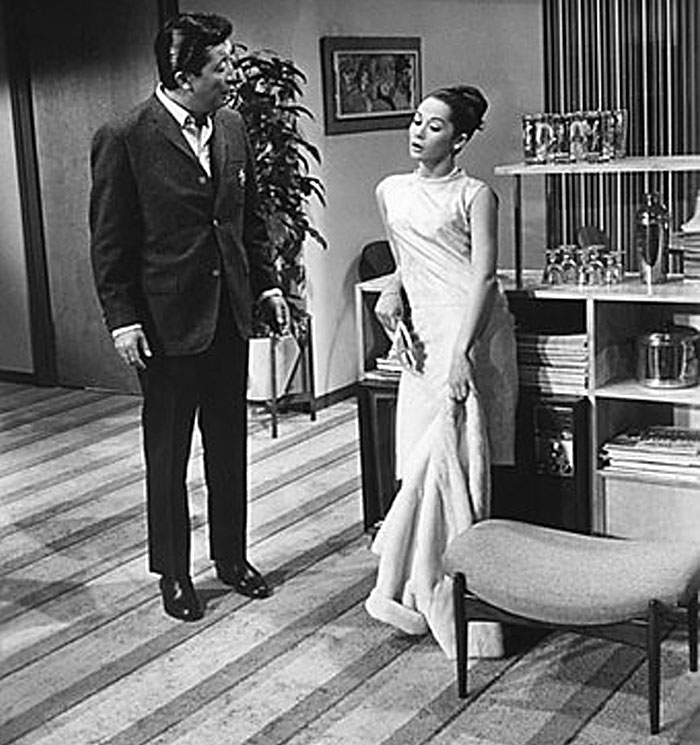
For two decades from 1940-1960, known as "the Golden Age of Musicals," Rodgers and Hammerstein dominated Broadway and Hollywood, defining
and redefining the American musical. They garnered forty-two Tonys, fifteen Academy Awards, two Pulitzer prizes, two Grammys, and two
Emmys. Not only did their six most successful works have long runs on Broadway and multiple tours across the globe, but each was made into a
major Hollywood movie, and perhaps more remarkable, to this day those movies, just as the stage revivals of the Rodgers and Hammerstein shows,
continue to speak with a surprising clarity and freshness. To be sure, some of the underlying themes and issues are rooted in their period, but the
essential heart of the works remains aesthetically and emotionally powerful.
On the heels of the recent West Side Story remake, I decided to revisit the
six award-winning Rodgers and Hammerstein movie classics: Oklahoma, Carousel, South Pacific, The King and I, Flower Drum Song, and The Sound of Music. Spanning a decade from 1955-1965 these movies have not
lost their appeal. Perhaps much of the credit for this must be given to Rodgers and Hammerstein, themselves, who insisted on producing the
cinematic versions of their plays and who retained a lion's share of artistic control over screenplay, casting and creative choices. Just as they
introduced major changes into the world of musical theatre, pioneering musicals with serious themes interwoven into what was often a ground
-breaking book structure, they managed to preserve in the movie versions most of what was considered revolutionary, bowing rarely and only slightly
to the conventions of Hollywood. Thus, these original films have much of the same dramatic impact as the Broadway shows, while they skillfully
make use of then considered novel cinematic techniques (Todd-AO, Technicolor, Cinemascope) and take advantage of all the visual effects that
location shooting could offer. Admittedly, to the modern eye, some of these nascent cinematography effects are primitive – single camera shots,
lots of wide-angle footage to capture the big numbers, not always transitioning from studio set to location seamlessly – but, taken in the
whole of the movie, they do little to diminish the enjoyment. And over the course of the decade from Oklahoma's release in 1955 to the brilliantly filmed Sound of Music in 1965 the films grow in sophistication.
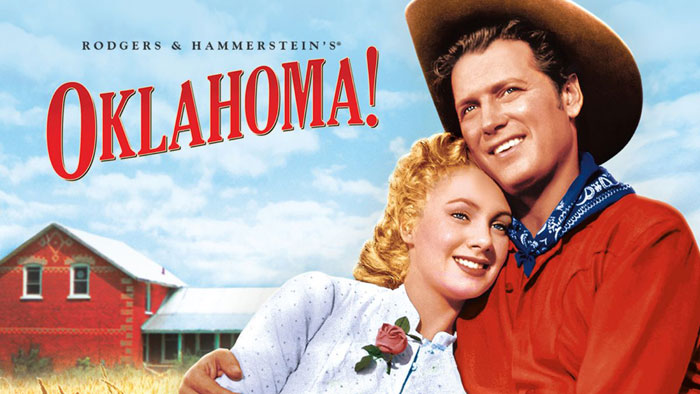
When Rodgers and Hammerstein agreed to a movie version of their 1943 hit Oklahoma, they did so with the proviso that they couldpersonally
oversee the film to prevent the studio from making changes of the kind that were then typical in stage-to-film musical adaptations. A few changes
were made - most notably Jud's death, which becomes accidental when Curly jumps from burning haystack and falls on Jud who, in turn, falls on
his knife. Stunning is the intact and atmospheric dream ballet in which Laurey contemplates her choice between Curly and Jud. Rodgers and
Hammerstein's casting is savvy with Shirley Jones, whom they discovered in one of their weekly New York City auditions, as Laurey, and Gordon
MacRae as Curly visually credible and vocally strong, and the supporting cast brightened by veterans like Charlotte Greenwood as Aunt Eller, Rod
Steiger as Jud, and James Whitmore as Andrew Carnes. Of all six classic movies, Oklahoma is perhaps the most guileless, straightforward
translation of Broadway show to screen.
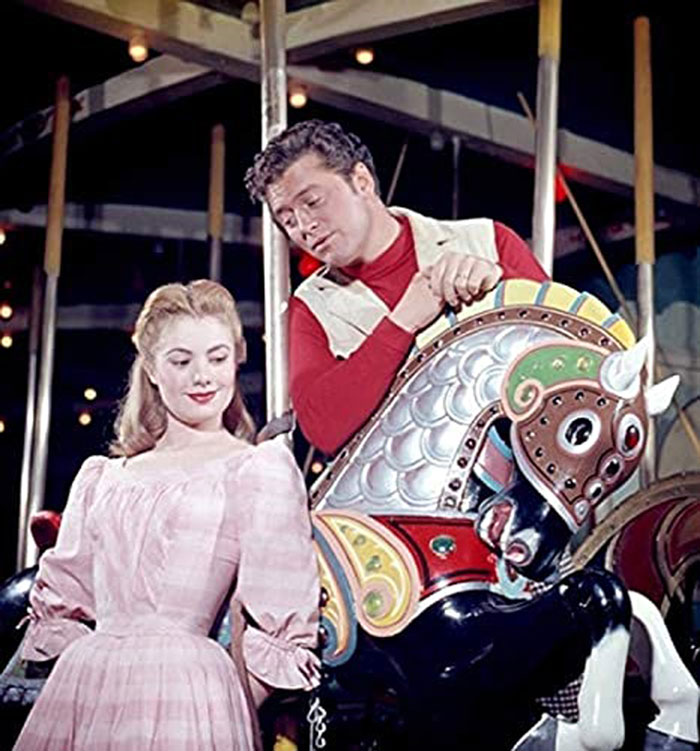
Barely a year later, Carousel was released (1956) and the growth in
technique is palpably visible. The movie was shot on location in Boothbay, Camden, and other Maine seacoast spots, with stunning vistas and
constructed set pieces that are well-integrated into the landscape. Rod Alexander refashioned Agnes De Mille's choreography, but kept the lovely
and lyrical Dream Ballet danced exquisitely by Jacques D'Amboise. Once again, Billy's suicide is changed into an accidental death, and we hear
about his domestic violence, but never see him hit Julie. Casting is again
strong with Shirley Jones as a lissome Julie and Gordon MacRae – albeit a second choice after Frank Sinatra bailed – an appealing Billy Bigelow.
Claramae Turner is less operatic than some as Nettie, but still moving in "When You Walk Through a Storm," and Barbara Ruick and Robert
Rounsville are luxury casting for Carrie and Enoch Snow. While there is a quaintness to the story – especially in Billy's interchanges with the
Starkeeper (reminiscent of It's a Wonderful Life) and his return to earth – you have to be made of stone not to start crying at the concluding
graduation ceremony when the unseen Billy whispers to Julie that he loved her and the entire company launches into a finale of "When You Walk
Through a Storm." There is so much consternation today about the inappropriateness of Billy and Julie's relationship and her acceptance of
his anger and violence that causes modern producers to hesitate to bring the work to the stage. And that seems a shame for, if we would stop
judging the characters and the work, understand its context and its veracity, and listen- above all LISTEN to what is arguably Rodgers and
Hammerstein's greatest music and lyrics, we would need no further justification to appreciate this masterpiece.
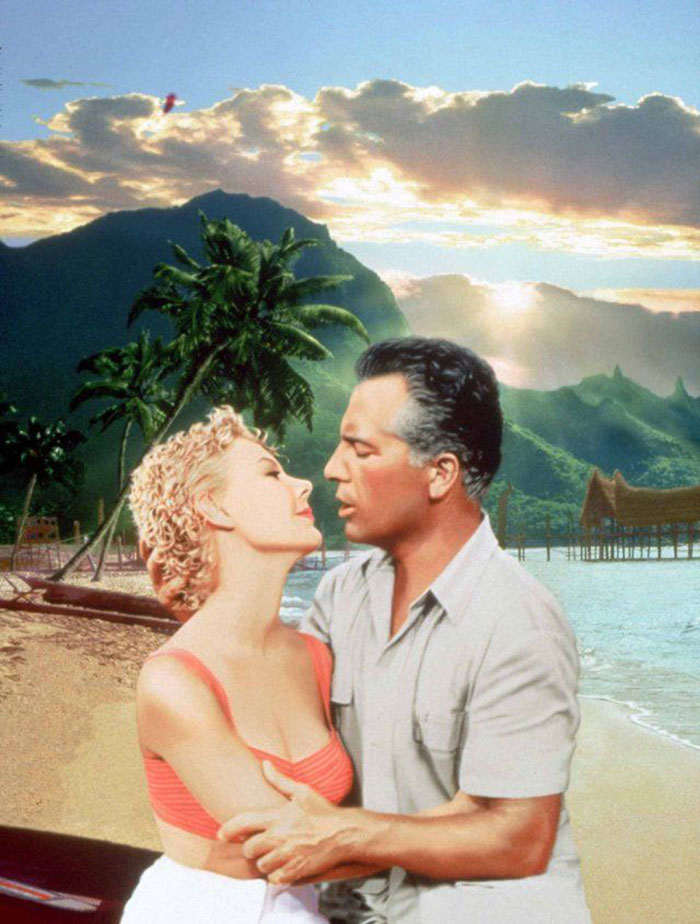
The same is true for South Pacific, which – with its exploration of racial
prejudice – was groundbreaking in 1949, but which some modern viewers find "shallow." The movie version, released in 1958, retains the power of
the dual love stories of Nellie and Emile and Cable and Liat, as well as the comedic warmth of characters like Luther Billis. And like Carousel, it
benefits from gorgeous on location shooting in Hawaii and the Fijii Islands, integrated with skillful painted scenery. It solves the problem in the stage
musical toward the end of the play when various characters recount Operation Alligator. Replacing exposition with action – something the
cinematography permits adds measurably adds to the dramatic effect. Joshua Logan's direction is as taut and telling as in the stage version,
though the choice to use colored filters for the songs comes across as a stilted and bizarre touch. Mitzi Gaynor is not Mary Martin, but she is
perky and convincing enough as the naïve Nellie Forbush. Rossano Brazzi makes a sophisticated and elegant Emile de Becque, and Giorgio Tozzi's
lush bass-baritone serves well in the dubbing. France Nuyen is a vulnerable and lovely Liat and John Kerr is a handsome, if somewhat jaded
Lt. Cable, who misses the "boy next door" quality of the character. Bill Lee dubs his music with none of the soaring romance it deserves. Juanita Hall
(dubbed by Muriel Smith) is a wily Bloody Mary. More so than Oklahoma and Carousel, South Pacific celebrates the differences between film and
stage and makes use of the enhanced devices that film can offer.
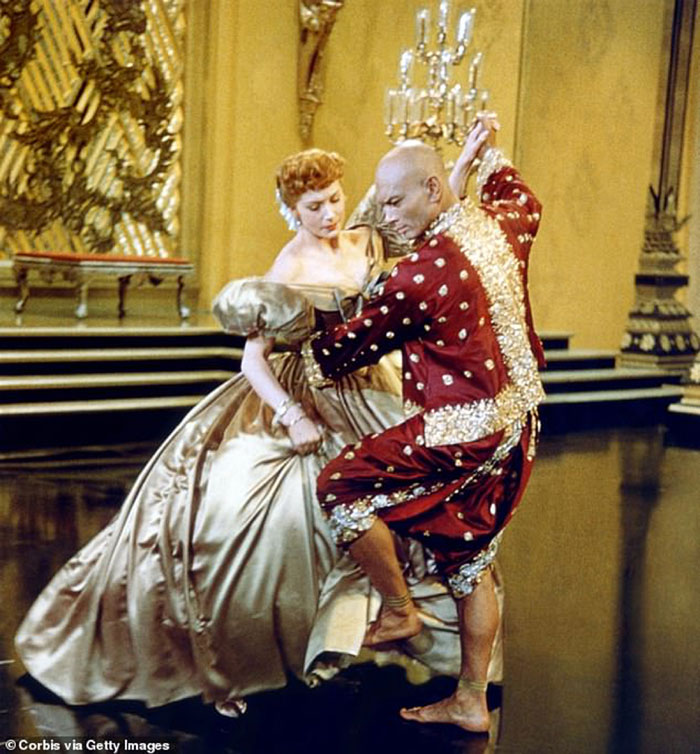
The King and I, released in 1956, shared the same lavish optical aesthetic as South Pacific and took the visual elegance up a few notches in the
interior shots by conjuring up a glittering, exotic "Oriental" world. More so than South Pacific and Flower Drum Song, the film strives to create an
Eastern sensibility and attempts to recreate the ambiance of a Southeast Asian monarchy in the 19th century. There is no question that visual
splendor and effects take precedence over historical accuracy, but the overall look is convincing enough. Not so with the casting which
disregards ethnicity, casting Latinex Rita Moreno as Tuptim and Carlos Rivera as Lun Tha or Causians Terry Saunders as Lady Thiang and Martin
Benson as the Kralahome. Yet, if one puts aside these modern scruples and just absorbs the performances – they are stellar; they make you believe
and that is what acting is after all! And at the center of the company is a radiant Deborah Kerr, voiced by the stalwart Marni Nixon, and a brilliant
Yul Brynner- sexy, feline, mercurial, truly, as his Head Wife sings "something wonderful!"
The 1961 film of Flower Drum Song broke new ground in casting by
becoming the first major Hollywood feature film to have a majority Asian-American cast in a contemporary Asian-American story, though many of
the leading characters were played by Japanese rather than Chinese actors. Though the story is set in San Francisco's Chinatown, almost none of the
movie was made on location. Still, it has a colorful ambiance, especially in Gregg Barnes' costumes. Once again some of the major characters were
dubbed, most notably, opera mezzo soprano Marilyn Horne delivering the knockout torch song, "Love Look Away" for Reiko Sato as Helen Chao. As
the diffident and beguiling Mei Li, Myoshi Umeki gives a performance that tugs at the heart strings, while Nancy Kwan and Jack Soo (Linda Low and
Sammy Fong) add streetwise comedy.
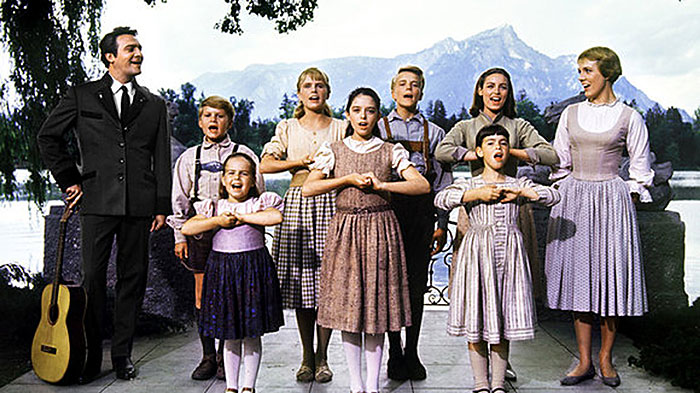
The last of the Rodgers and Hammerstein classic blockbuster movies, The Sound of Music, appeared in 1965, and it remains to today, arguably, the
most beloved of the partners' film canon. Rewatching this film with its incandescent cast – Julie Andrews, Christopher Plummer, Peggy White –
one cannot help but fall in love all over again with the story, the score, the book filled with laughter and romance and history and inspiration. Made a decade after Oklahoma, it is obvious what Rodgers and Hammerstein and
their co-creators had learned. The film is opulent in its use of the spectacular natural scenery of Salzburg and the Alps, creating new contexts
for so many of the songs and incorporating gorgeous historical monuments such as Nonnberg Abbey, the Felsenreitenschule, Schloss Josefkröne.
While Plummer and Peggy White are dubbed, Julie Andrews in her prime in her pristine, crystalline, radiant soprano is reason enough to listen – and
watch- because Andrews makes Maria von Trapp a tough-minded, gentle-hearted, thoroughly credible character. The film does soften the Nazi
element, regrettably omitting Baroness Schraeder and Max's song "No Way to Stop It" and alters the ending escape scene a little to make the Captain
more heroic, but otherwise, it is a faithful and uplifting retelling of one of Rodgers and Hammerstein's most beloved works.
There have been countless restagings of Rodgers & Hammerstein's
musicals – many contemporary ones, that wrestle with politically correct perceptions of social mores, racial issues, and gender roles – and there
have been newer film and television versions. But there is something authentic and lasting about these original classic movies. Perhaps because
they have the undeniable stamp of the composer and lyricist's hand in every aspect? Perhaps because so little has been changed from stage to
screen especially in terms of presenting virtually the full score (even overture, entr'acte and curtain credits)? Perhaps precisely because there is
a kind of naiveté – a wide-eyed, open-hearted, wear-it-on-your-sleeve Romanticism in the music, in the story, in the poetry. Perhaps because
these films, like the original stage versions which inspired them, retain a freshness, a wonder, a sense of being some of the many million miracles
that make the world of Rodgers and Hammerstein sing.
Cover Drawing by Al Hirshfield
|